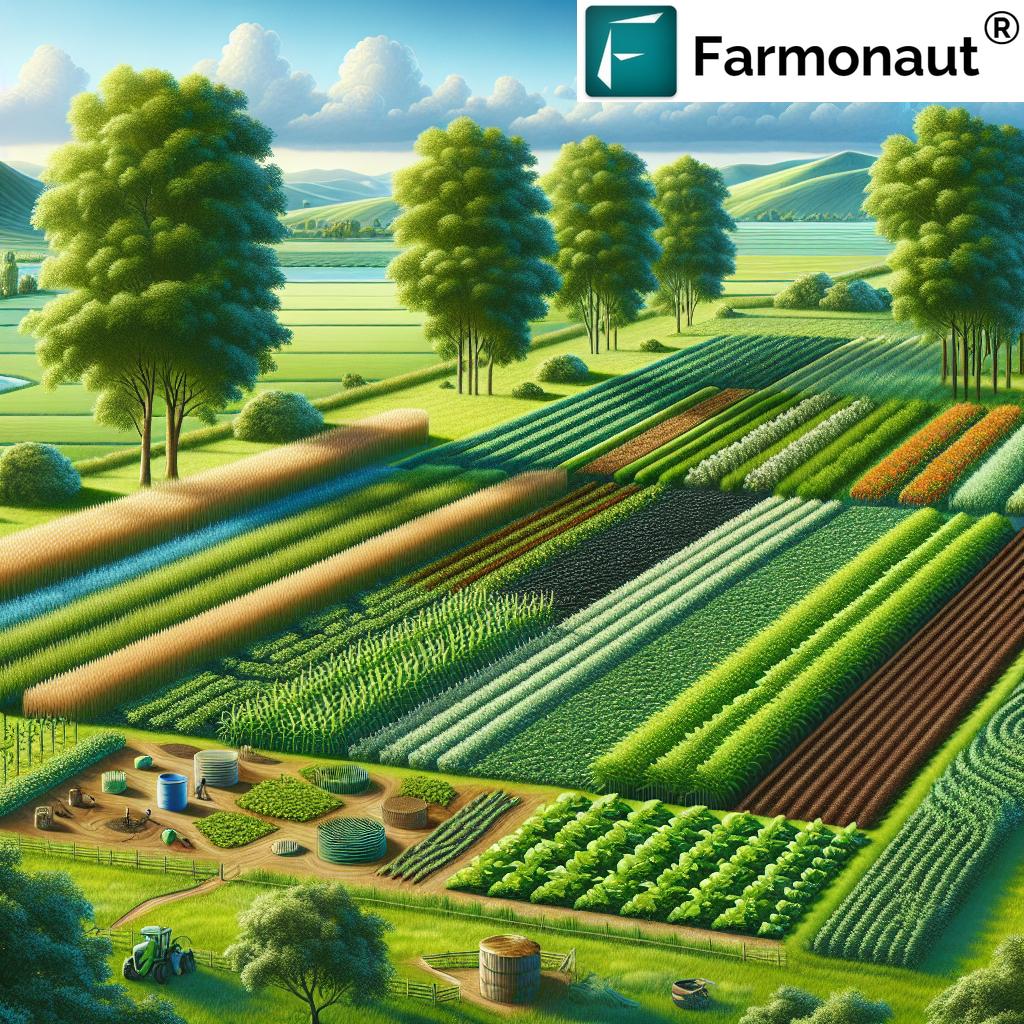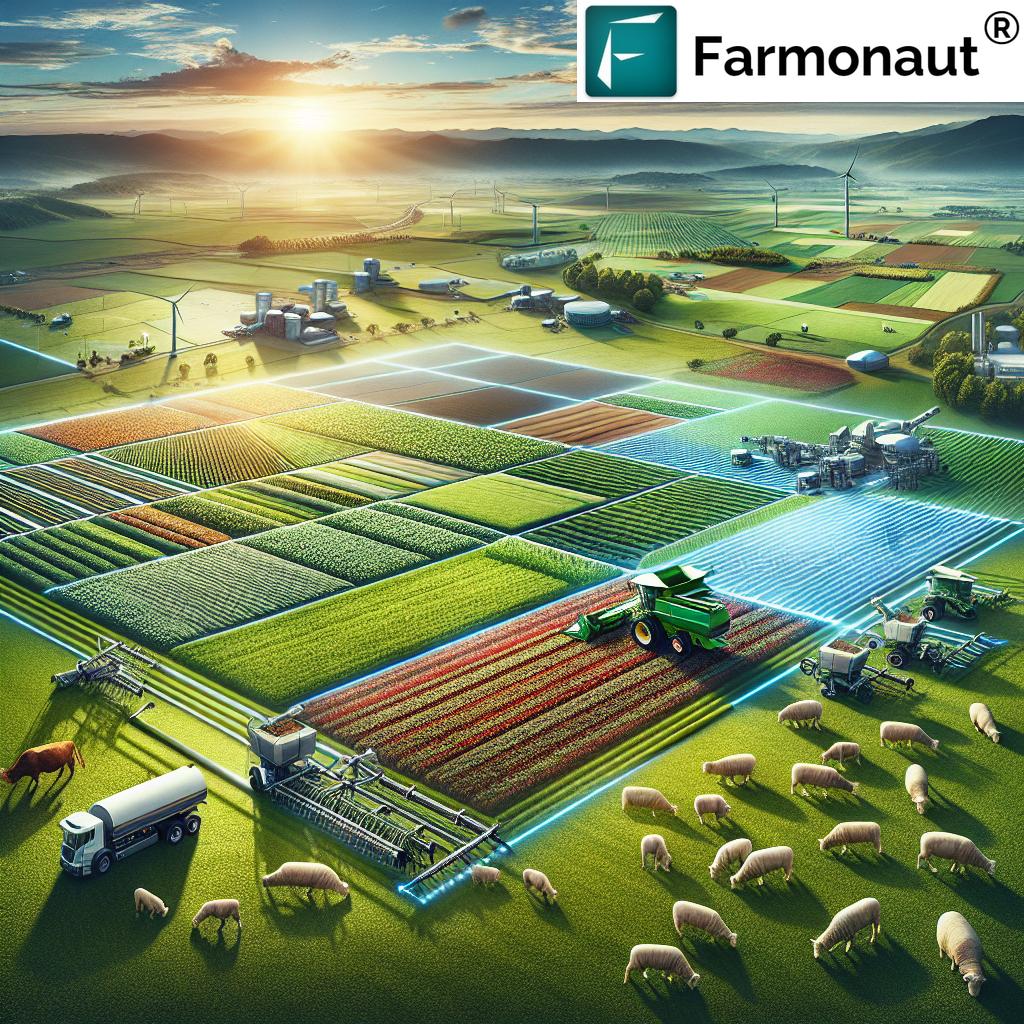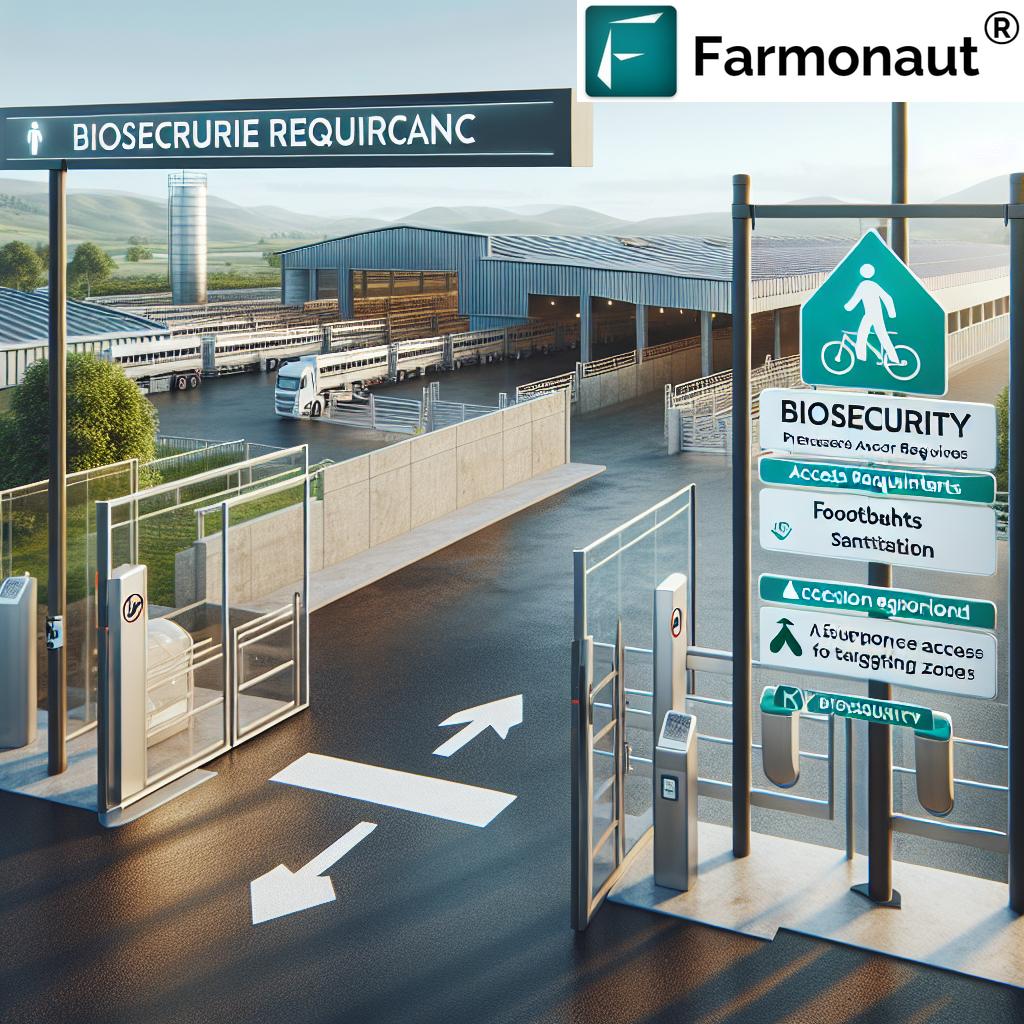Modern Types of Agriculture: 6 Powerful Methods for 2025
Meta Description: Explore modern types of agriculture for 2025: from precision and vertical farming to organic, conservation, agroforestry, and smart methods—innovations redefining sustainable farming and boosting productivity for a climate-resilient future.
Modern Types of Agriculture: Embracing Innovation for Sustainable Farming in 2025
Agriculture has always been the backbone of human civilization. The journey from traditional farming techniques to the modern types of agriculture we see emerging today is marked by continuous innovation, the urgent need for sustainability, and adaptation to the challenges of climate change, resource scarcity, and growing populations.
In 2025 and beyond, agriculture is transforming through the integration of advanced technologies like satellite data, IoT sensors, AI, and blockchain. We are witnessing a digital revolution across farmers, businesses, and governments—driven by the need to boost productivity while safeguarding our environment.
Understanding the various types of modern farming methods is essential for anyone looking to appreciate how today’s agriculture balances high yields, resilience, and stewardship of natural resources. In this comprehensive guide, we explore the 6 most powerful agriculture types for 2025: Precision Agriculture, Vertical Farming, Organic Farming, Conservation Agriculture, Agroforestry, and Smart Farming.
Are you ready to explore how these innovative approaches are shaping the future of food production, resource management, and environmental sustainability worldwide?
“Over 70% of vertical farms use LED lighting and hydroponics to grow crops without soil in urban spaces.”
1. Precision Agriculture: The Forefront of Modern Farming Techniques
Understanding Precision Agriculture
Precision agriculture represents the leading edge among modern types of agriculture. It leverages technologies such as GPS, remote sensing, drones, GIS mapping, IoT (Internet of Things) sensors, and big data analytics to collect and interpret detailed data about soil health, crop conditions, weather patterns, and even pest threats.
By using these real-time data streams, farmers can apply water, fertilizers, and pesticides precisely where and when needed—reducing resource waste, improving yields, minimizing the environmental impact, and boosting profitability.
- GPS-guided machinery: Assists in ultra-accurate planting, spraying, and harvesting, minimizing overlap and missed areas.
- IoT Sensors & Remote Sensing: Track soil moisture, temperature, salinity, crop growth stages, and pest infestations.
- Drones: Provide aerial imagery for early detection of crop stress and weed/pest issues.
- Variable-rate technology: Machinery auto-adjusts the application rate of inputs for maximum efficiency.
Benefits for 2025:
- Reduce fertilizer and pesticide use by up to 30% without sacrificing yields.
- Optimize water usage—crucial as climate conditions and drought frequency increase.
- Decrease labor costs through automation and data-driven management.
- Support carbon footprint reduction via smarter, minimal interventions.
Modern types of agriculture like precision farming fundamentally change resource management, making sustainability not only feasible but profitable.
2. Vertical Farming: Transforming Urban Agriculture Types
What Is Vertical Farming?
Vertical farming is an innovative approach to food production especially useful in cities, peri-urban zones, and space-constrained environments. This modern type of agriculture involves growing crops in vertically stacked layers within controlled indoor systems—including greenhouses, warehouse farms, skyscraper gardens, and custom-built plant factories.
- Utilizes hydroponic, aeroponic, or aquaponic systems—growing without soil with recirculating water and optimized nutrient delivery.
- Built around LED lighting, climate controls, CO2 enrichment, and AI-driven monitoring to create tailor-made growth environments—year-round, regardless of weather.
- Perfect for leafy greens, herbs, microgreens, tomatoes, strawberries, and even specialty crops.
Key Advantages:
- Requires up to 95% less water than traditional agriculture types.
- Enables urban food production, reducing transportation emissions and supply chain vulnerability.
- Maximizes land use efficiency—vital as arable land shrinks globally.
- Minimizes pesticide/fertilizer use due to closed-loop systems.
- Production unaffected by climate variability: consistent output 365 days a year.
As more urban populations demand fresher produce, vertical farming will grow rapidly, helping to bridge food security and environmental challenges by 2025.
3. Organic Farming: The Sustainable Backbone Among Agriculture Types
Organic: Traditional Roots, Modern Relevance
Organic farming is an agriculture type that—despite its ancient roots—plays an essential modern role. In 2025, demand for organic food is still rising, propelled by concerns over food safety, soil degradation, climate change, and biodiversity loss.
- Avoids synthetic chemicals, pesticides, and GMOs—emphasizing natural inputs and ecological balance.
- Employs crop rotations, green manuring, compost, and biological pest control.
- Focuses on regenerating soil fertility and enhancing biodiversity through diverse cropping and living soil structure.
Core Benefits of Organic Farming in 2025:
- Improves soil organic matter, microbial activity, and structure.
- Reduces pollution and chemical residues in food and environment.
- Supports landscape resilience, water retention, and carbon sequestration.
Organic agriculture may sometimes yield slightly less than intensive types, but this is balanced by lower input costs, premium market prices, consumer trust, and benefits for health and the ecosystem. As sustainability becomes non-negotiable, organic farming remains vital to our future food systems.
4. Conservation Agriculture: Protecting Soil and Climate
Why Conservation Is Crucial for Sustainable Agriculture Types in 2025
Conservation agriculture is an agriculture type that blends minimal soil disturbance, continuous organic soil cover, and systematic crop rotations to foster healthier soils, sequester carbon, curb erosion, and safeguard both climate and yields.
- No-till or reduced-tillage planting: Keeps soil structure intact, reduces compaction and disruption of soil microbiota.
- Cover cropping: Maintains a living “blanket” over soil—reducing runoff, capturing excess nitrogen, and feeding soil life.
- Thoughtful crop rotations: Diversifies biological activity, suppresses pest cycles, and boosts soil fertility without synthetic inputs.
By 2025, conservation agriculture is indispensable for combating land degradation, improving water retention, suppressing weeds, and cutting costs. It also boosts climate resilience and enables farmers to store carbon in their soil—a key pillar of sustainability.
5. Agroforestry: A Multifunctional Approach to Farming
Agroforestry: Combining Trees and Crops for Maximum Benefit
Agroforestry is a modern type of agriculture that integrates trees, shrubs, and perennial plants with annual crops and livestock systems. It creates landscapes that combine agriculture and forestry principles, delivering a wide suite of ecological and economic benefits.
- Enhanced biodiversity: Habitat creation and natural pest control through species diversity.
- Soil and water improvement: Tree roots prevent erosion, increase water infiltration, and anchor nutrients.
- Climate mitigation: Woodland canopies sequester significant carbon, buffer microclimates, and provide windbreaks.
- Diversified income: Timber, nuts, fruits, medicinal plants, honey, and agri-tourism revenue for rural and peri-urban communities.
Agroforestry is increasingly recognized as a climate solution that restores degraded lands, revitalizes rural economies, and supports food security—making it a vital agriculture type for 2025 and beyond.
6. Smart Farming: AI, Robotics, and Data—The Next Era of Agriculture Types
How Smart Methods are Transforming Modern Types of Agriculture
Smart farming combines artificial intelligence (AI), big data analytics, machine learning, robotics, and advanced connectivity to automate, optimize, and innovate every aspect of farming.
The smart agriculture revolution is what propels types of modern farming from simply efficient to truly intelligent.
- Autonomous tractors, planters, and robotic harvesters minimize labor and maximize planting/harvesting accuracy.
- AI-powered drones and remote sensors monitor real-time crop health, detect pest/disease outbreaks, and trigger intervention alerts.
- Connected weather stations and microclimate monitors forecast risk and optimize input timings.
- AI-driven analytics forecast yields, identify resource hotspots, and suggest precise fertilizer/irrigation schedules tailored to every field.
Benefits by 2025:
- Reduces waste by targeting interventions only where and when necessary.
- Increases yields and profitability through hyper-local management.
- Supports climate-smart, data-driven stewardship of resources.
“Precision agriculture can reduce fertilizer use by up to 30% while maintaining or increasing crop yields in 2025.”
Comparison Table: Modern Types of Agriculture Methods (2025)
| Agriculture Method | Core Technology Used | Estimated Productivity Increase by 2025 (%) | Sustainability Impact | Land & Resource Use Efficiency | Example Crop Types |
|---|---|---|---|---|---|
| Precision Agriculture | Drones, IoT Sensors, Satellite Data, GPS, Data Analytics | 15–35% | High | High | Cereals, Oilseeds, Vegetables, Pulses |
| Vertical Farming | LED Lighting, Climate Control, Hydroponics/Aeroponics | 30–300% (per sqm) | High | Very High | Leafy greens, Herbs, Microgreens, Strawberries |
| Organic Farming | Composting, Rotations, Biological Pest Control | 5–15% | High | Medium–High | Vegetables, Fruits, Pulses, Grains |
| Conservation Agriculture | No-till Seeders, Cover Cropping, Satellite Soil Health Monitoring | 10–25% | High | High | Cereals, Oilseeds, Pulses |
| Agroforestry | Mixed Plantings, GIS Mapping, Water Conservation Techniques | 10–50% | Very High | High | Cocoa, Coffee, Spices, Timber, Fruits |
| Smart Farming | AI, IoT, Robotics, Data Platforms, Autonomous Machinery | 20–40% | High | Very High | All major field and specialty crops |
How Farmonaut Supports Modern Types of Agriculture in 2025
Empowering Data-Driven Agriculture Types with Satellite and AI
As a satellite technology pioneer, we at Farmonaut offer affordable, real-time analytics and management tools for all stakeholders in agriculture.
Our core mission is to make satellite data, AI-driven insights, blockchain traceability, and resource monitoring accessible to farmers, businesses, and governments—empowering the next generation of modern agriculture types.
Key Farmonaut Technologies for Modern Farming:
- Satellite Crop Monitoring: Receive NDVI-based maps, soil moisture, and field health alerts from anywhere—ideal for precision, conservation, organic, and vertical farming.
- AI-Powered Jeevn Advisory: Unlock tailored strategies on input timing, weather risks, pest outbreak prediction, and more—to maximize productivity.
- Blockchain Traceability: Assure supply chain authenticity for organic, specialty, or export crops with secure, transparent farm-to-fork tracking.
- Fleet & Resource Management: Optimize machinery and staff management for smart farming and large-scale farms.
- Environmental Monitoring: Quantify carbon emissions and water use to comply with sustainability goals and regulatory standards.
Need custom integrations? Use the Farmonaut API for seamless access to our satellite-driven insights.
Explore our Developer Docs for comprehensive guides and sample code.
Satellite Crop Loan & Insurance Verification: Enhance financial access and security using Farmonaut’s remote verification and risk assessment services for agriculture and mining.
FAQ: Modern Types of Agriculture for 2025
-
Q: What are the main modern types of agriculture for 2025?
A: The primary types of modern farming methods in 2025 include Precision Agriculture, Vertical Farming, Organic Farming, Conservation Agriculture, Agroforestry, and Smart Farming. Each method combines technology and sustainable practices, with unique solutions for productivity, resource use, and resilience. -
Q: How does modern agriculture differ from traditional farming?
A: Modern types of agriculture leverage data, automation, and scientific advances (such as satellite imagery and AI) to optimize every aspect of farming—from planting to resource use—reducing environmental impact while increasing yields. Traditional farming typically involves more manual labor and less targeted input management. -
Q: Is organic farming still relevant as agriculture becomes more high-tech?
A: Yes, organic farming remains crucial for ecosystem and soil health, plus consumer demand for chemical-free food continues to rise. When combined with modern precision data tools, organic practices become more efficient and scalable. -
Q: Does vertical farming use GMOs or chemicals?
A: Most vertical farms focus on non-GMO crops grown in tightly controlled, chemical-free systems using hydroponics or aeroponics, reducing or eliminating synthetic pesticides/fertilizers. -
Q: Is precision agriculture affordable for small and mid-size farmers?
A: With advancements in cloud technologies, satellite data platforms, and mobile apps, precision agriculture is becoming more accessible and cost-effective—even for small farms. Tools like Farmonaut are specifically designed to lower technology barriers across sectors. -
Q: How does agroforestry benefit climate resilience?
A: Agroforestry systems capture more carbon, maintain biodiversity, protect against extreme weather, and diversify income—making them a top climate adaptation and mitigation method for agriculture in all regions. -
Q: What are the risks of relying solely on smart farming and automation?
A: Over-reliance may bring new risks of cyberattacks or power failures, and technology investments require robust infrastructure. However, when combined with skilled management and best agronomic practices, smart farming accelerates productivity and sustainability.
Conclusion: The Future of Modern Types of Agriculture
As we move further into 2025, embracing modern types of agriculture is not a trend but an imperative. Driven by innovation, resource constraints, environmental challenges, and population growth, agriculture is evolving into a data-driven, technology-powered, and climate-smart sector.
- Precision and Smart Farming methods optimize every input, improving profitability while reducing waste.
- Vertical Farming and Agroforestry create resilient, urban, and multifunctional food landscapes.
- Organic and Conservation Agriculture restore soil health, promote biodiversity, and protect future resources.
We at Farmonaut remain committed to supporting this transformation, harnessing satellite, AI, and blockchain technology for all users—enabling a future where food systems thrive in balance with people and planet.
Want to experience the future of agriculture types? Start with Farmonaut today!











